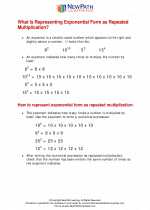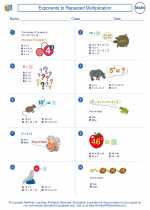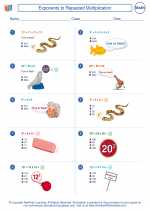Exponents to Repeated Multiplication -> negative exponent
Negative Exponents
Exponents are a way of representing repeated multiplication of the same number. A negative exponent indicates that the base should be divided by itself the given number of times. When a number is raised to a negative exponent, it is converted to its reciprocal.
Rules for Negative Exponents
- Reciprocal Rule: Any non-zero number raised to a negative exponent is equal to the reciprocal of the same number raised to the positive exponent.
- Division Rule: When a number with a negative exponent is in the denominator, move it to the numerator and change the exponent to positive.
For example, if a is a non-zero number and n is a positive integer, then a-n = 1 / an.
For example, if a is a non-zero number, then 1 / a-n = an.
Examples
Let's consider the following examples to understand the concept of negative exponents:
- 5-3
- 2-4 / 23
Using the reciprocal rule, 5-3 = 1 / 53 = 1 / 125
Using the division rule, we can move 2-4 from the denominator to the numerator and change the exponent to positive: 2-4 / 23 = 2-4 * 2-3 = 1 / (24 * 23) = 1 / (16 * 8) = 1 / 128
Study Guide
To master the concept of negative exponents, follow these steps:
- Understand the meaning of negative exponents and their connection to reciprocals.
- Practice applying the reciprocal rule to simplify expressions with negative exponents.
- Learn how to use the division rule to move negative exponents between the numerator and denominator.
- Work on various examples and exercises to strengthen your understanding and skills in handling negative exponents.
Remember to always keep these rules in mind when dealing with negative exponents, and practice regularly to improve your proficiency in this topic.
.◂Math Worksheets and Study Guides Sixth Grade. Exponents to Repeated Multiplication

 Worksheet/Answer key
Worksheet/Answer key
 Worksheet/Answer key
Worksheet/Answer key
 Worksheet/Answer key
Worksheet/Answer key
 Worksheet/Answer key
Worksheet/Answer key
